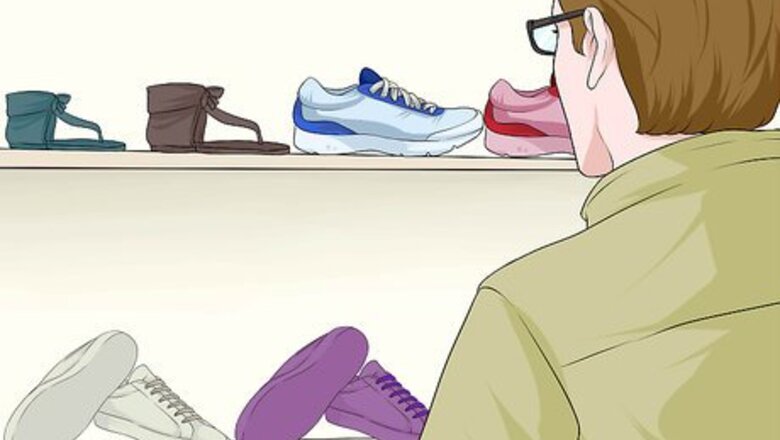
views
Choosing Comfortable Features
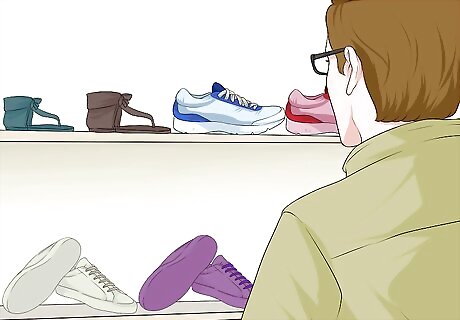
Look for shoes that feature designs built for comfort. Some shoes forgo comfort for the sake of style. Though this might be fine for occasional wear, you want to look for those features when seeking a comfortable shoe. These features include: An Achilles notch. The groove featured at the back of the shoe where the shoe meets the Achilles tendon. This notch helps reduce the friction and rubbing near the heel, preventing blisters and other tearing of the skin at the heel. An ankle collar. Ankle collars are the area of the shoe that wraps around the ankle (where the Achilles notch is located). Ankle collars provide support for the ankle and prevent rubbing and friction. A midsole. The midsole is the "floor" of the shoe and helps absorb shock and helps control foot motion. Its important to choose a shoe that has a midsole that fits your foot. An appropriate toe box. The toe box is the portion of the shoe that houses your toes. Wearing a shoe that features a toe box too small for your feet can lead to bunions and other sores. A roll bar. Some shoes, particularly running or hiking shoes, feature a roll bar which helps prevent excess movement in the heel area of the shoe. This can help prevent friction and accidental "rolling" of the ankle.
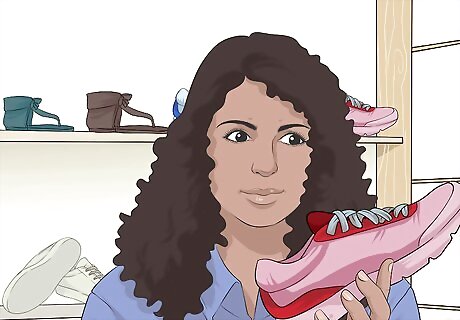
Pick a shoe that is flexible. Flexibility is an important consideration for comfort, and are particularly important in walking and jogging shoes. Running shoes tend to be more firm, as they must support the weight and force of a running stride. Test a shoe for flexibility by picking it up and bending the toe upward. The shoe should bend under the ball of the foot, not halfway along the arch (or elsewhere). Twisting the shoe is also a good way to test for support. There should be some light resistance from the shoe when you twist.
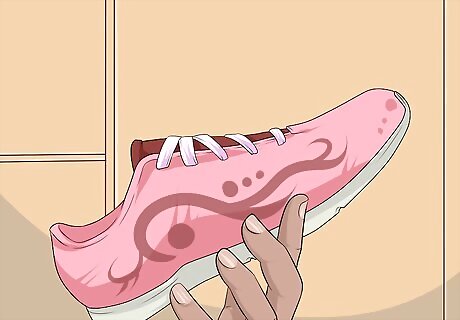
Choose a lightweight shoe. Heavy shoes take more effort to move around in, and are usually made of a less comfortable material. Heavier shoes also tend to be less flexible as a result, which can stifle your natural stride. Shoes made of a lightweight material are particularly useful for hiking, or for wear in warm, dry weather. Such material allows your foot to breathe more easily in such climates.
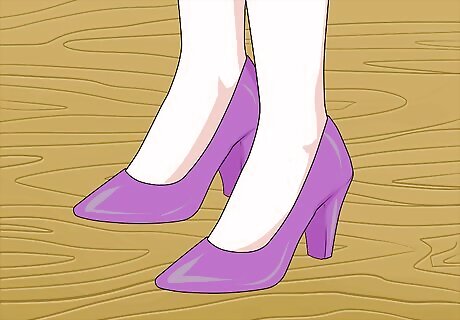
Pick a small, wide heel. Keeping the heel wider and close to the ground offers the greatest support for your ankles and heel. This is particularly important for sandals or dress shoes. Anything over 2 inches in height raises the risk of ankle sprains. The sharper the incline of the shoe, the greater strain you are placing on your feet.
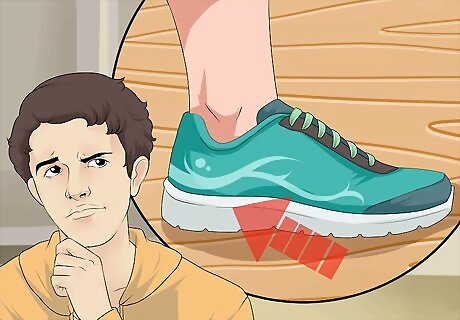
Choose good cushioning. The type of cushioning in a shoe will vary depending on the type of shoe. For example, a running shoe will have more cushion on the heel, where a walking shoe will have more cushion on the ball of the foot. Make sure you are purchasing a shoe designed for the activity you intend to wear it for. Try out the shoe on a hard surface as well as a soft one. The level of comfort the cushion provides may be different when walking on a harder surface. This is a good opportunity to make sure the toe box has enough room for your toes.
Reviewing the Shape of Your Foot
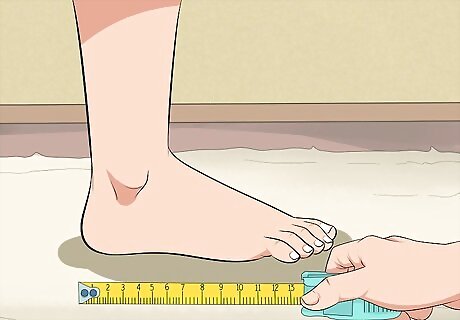
Measure your feet. Measuring your foot size is the first step in obtaining the most comfortable shoes. Most shoe stores will have measuring devices, and the salespeople at those stores will be happy to help you get an accurate measurement. Many people have feet that are two different sizes. In this case, wear a size that suits your larger foot. It's a good idea to measure your feet at the end of the evening. That's when your feet are the most swollen. If you choose shoes that fit your feet comfortably at the end of the day, they'll be comfortable throughout the day, as well. Measure your feet every few years! Your feet change shape as the years go on. You want roughly a half inch between your longest toe and the end of your shoe for best comfort.
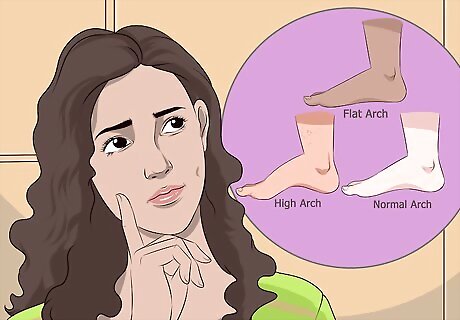
Identify your arch type. Most feet fall into one of three categories based on the shape of the arch. Choose shoes that accommodate the shape of your arch to achieve the most comfortable fit. If you’re unsure about the shape of your feet, take a look at your footprint. If you can see most of your foot print, you likely have low arches. If you can see very little, high arches.
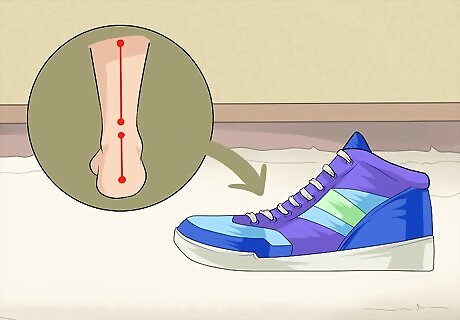
Choose firm midsoles for neutral-arched feet. Neutral-arched feet are neither overly- nor under-arched. Those with neutral arches can generally wear shoes of their choosing, as there is little need to compensate for shortcomings associated with the arches. Shoes with firm midsoles and moderate rear-foot stability are strong all-around choices for comfort and longevity, as they help sustain the natural stride of the foot.
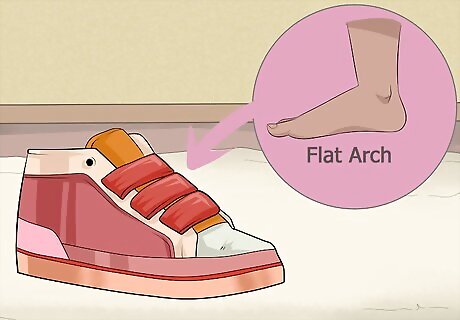
Choose a straight shoe for low-arched or flat feet. Low arches cause muscle stress and joint problems for the feet and legs. As a result, find a shoe with a straight last (the overall shape of the shoe) and strong motion control to help stabilize your stride. Additionally, look for shoes with raised insoles or supports that alleviate some of the excess pressure placed on the feet where the arch typically rests.
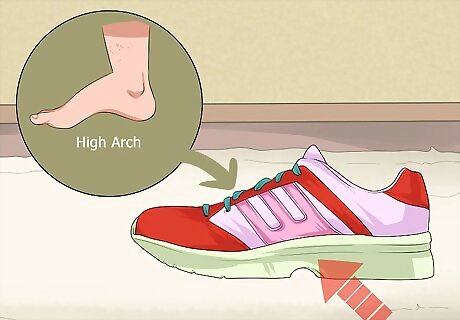
Find shoes with overall arch support for high-arched feet. High arches can cause strain on joints and muscles, and overall foot pain (especially at the heels) as they do not absorb shock well. Look for shoes that feature cushioned arch support to alleviate some of the impact that your foot experiences during your stride.
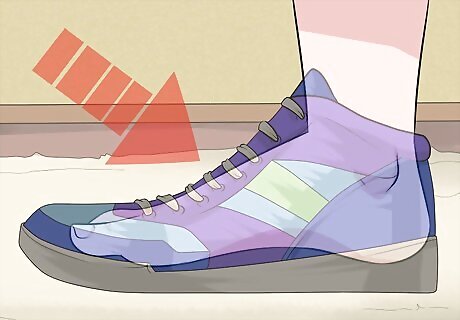
Make sure your foot fits. Though it sounds obvious, the shoe must contain enough room for your foot to rest comfortably. This includes the ball of the foot and toe area. Look for shoes with “false fronts.” These shoes are much longer at the toe area, which give your toes plenty of space and keep them from becoming cramped. The toe area should also be wide enough to fit your toes. Make sure your foot fits in any sandal you choose. Your toes shouldn’t hang over the edge of the shoe!
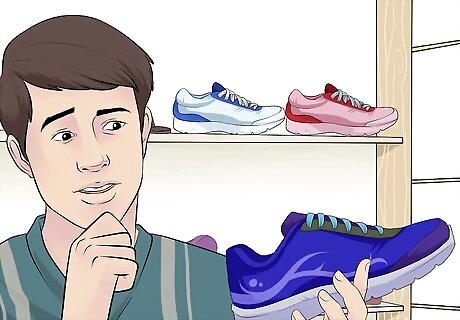
Look at product details before you buy. Look at the product details of any shoe you're interested in purchasing before you buy. The product details can be found on the box of the shoe, or near where the shoe is being displayed, and lists many of the details necessary for choosing the right shoe for the right foot, such as type of midsole, arch support, and more. If you don't see the product information or need help choosing the right shoe, ask an employee at the store. They can help you choose the right shoe with the right features after you explain your needs. The shoe manufacturer's website may also list product features that can help you make the right decision.
Adjusting the Shoe as Necessary
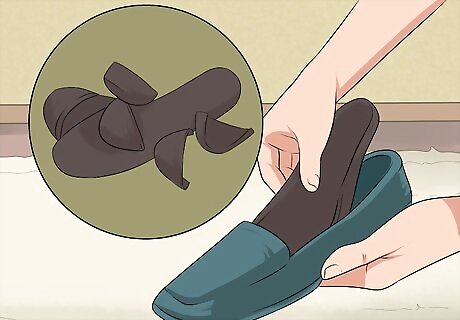
Add an insert. If your shoe lacks enough cushion, purchase an insert and place it in your shoe. They come in a variety of thicknesses, and are made of a variety of comfortable materials. Though soft gel inserts can feel good, they may not last long, and can disrupt the natural walking movement of your stride. Find an insert that offers comfort, but is "hard" enough to support your feet where they need it most. Some shoe stores have scanners that can identify where you need support. Try standing on one to get a better idea of what to look for in an insert. You can always ask a salesperson to help operate the device.
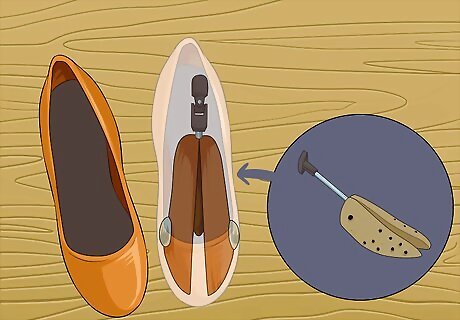
Break in the shoes. Some shoes become more comfortable and “broken in” the more they are worn. If you have a pair of dress shoes that you intend on using for long social events, spend a few evenings wearing them in advance of such events in order to break them in and make them more comfortable for those special occasions. Shoes can also be stretched to offer some more wiggle room. Take your shoes to a local cobbler to see if your shoes can be stretched without damaging the shoe. You may also purchase a self-stretching kit at many shoe stores.
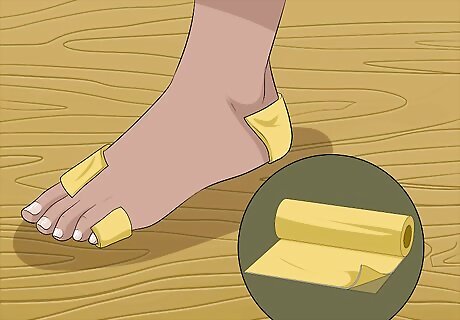
Apply moleskin. Apply a moleskin or other protective patch to your feet to protect them from chafing while you break in the shoe. Such patches can also be applied directly to the shoe in the areas that are giving you trouble. Moleskin pads will also help stretch out tight shoes, since it adds additional bulk to your foot.
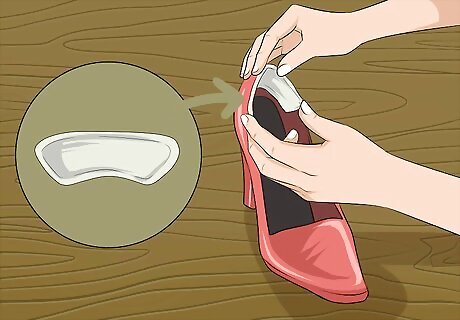
Add heel grips or sole pads. For shoes that are too loose, a heel grip can help keep the shoe firm on your foot. Similarly, adding a pad for the ball of the foot can keep your foot from sliding into the toe box, keeping the shoe snug. This is particularly useful for high heels and other shoes that feature an incline.
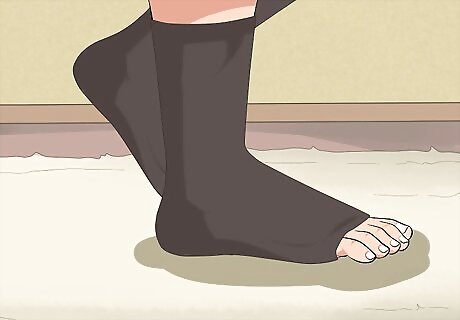
Wear specialized socks. If your shoe is too loose, wearing a thicker pair of socks (or multiple socks) can help fill out the gap. A variety of socks are available tailored for comfort as well, and can substitute for some insole inserts (or pair well with them). Sporting goods stores offer a variety of socks for different activities, with different padding depending on the activity. Orthopedic socks can be found at your local pharmacy. Tell your doctor about your needs and see if they can refer you to a specific brand that can help solve your comfort issues.

















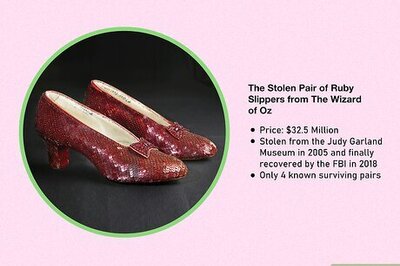
Comments
0 comment